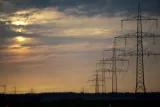How Can Europe and the United States Make Their Energy Infrastructure Fit for the Future?
Renewables and energy efficiency are key to both tackling climate change and reducing energy dependence. Cross-border electricity grids and smart technologies increase the stability and flexibility of the energy system that incorporates a growing share of renewables. Interconnections are thus vital for building an Energy Union with a forward-looking climate policy. The US has considerably advanced on the development of smart appliances and currently explores ways to improve its energy infrastructure with its first-ever “Quadrennial Energy Review”.
To boost energy security and to avoid stranded investments, the EU and the US must accelerate future-oriented smart infrastructure projects. Therefore, energy infrastructure planning needs to go hand in hand with the decarbonisation of the energy system. At the same time, sustainable energy infrastructure investments provide a great opportunity for growth in the EU and the US.
In Europe, projects of common interest and regional cooperation initiatives such as in the Baltic, in South West Europe and with the North Sea Grid can be a pertinent step towards a more interconnected sustainable Energy Union. In the US, a new dynamic of regional cooperation has also emerged as part of President Obama’s Clean Power Plan. How can the transatlantic exchange help to make energy infrastructure compatible with a transition to a low-carbon energy system? What new opportunities arise from investments in smart energy infrastructure? Which governance options can provide for effective, coherent and democratic energy infrastructure planning and what role can regional cooperation play in this regard?
